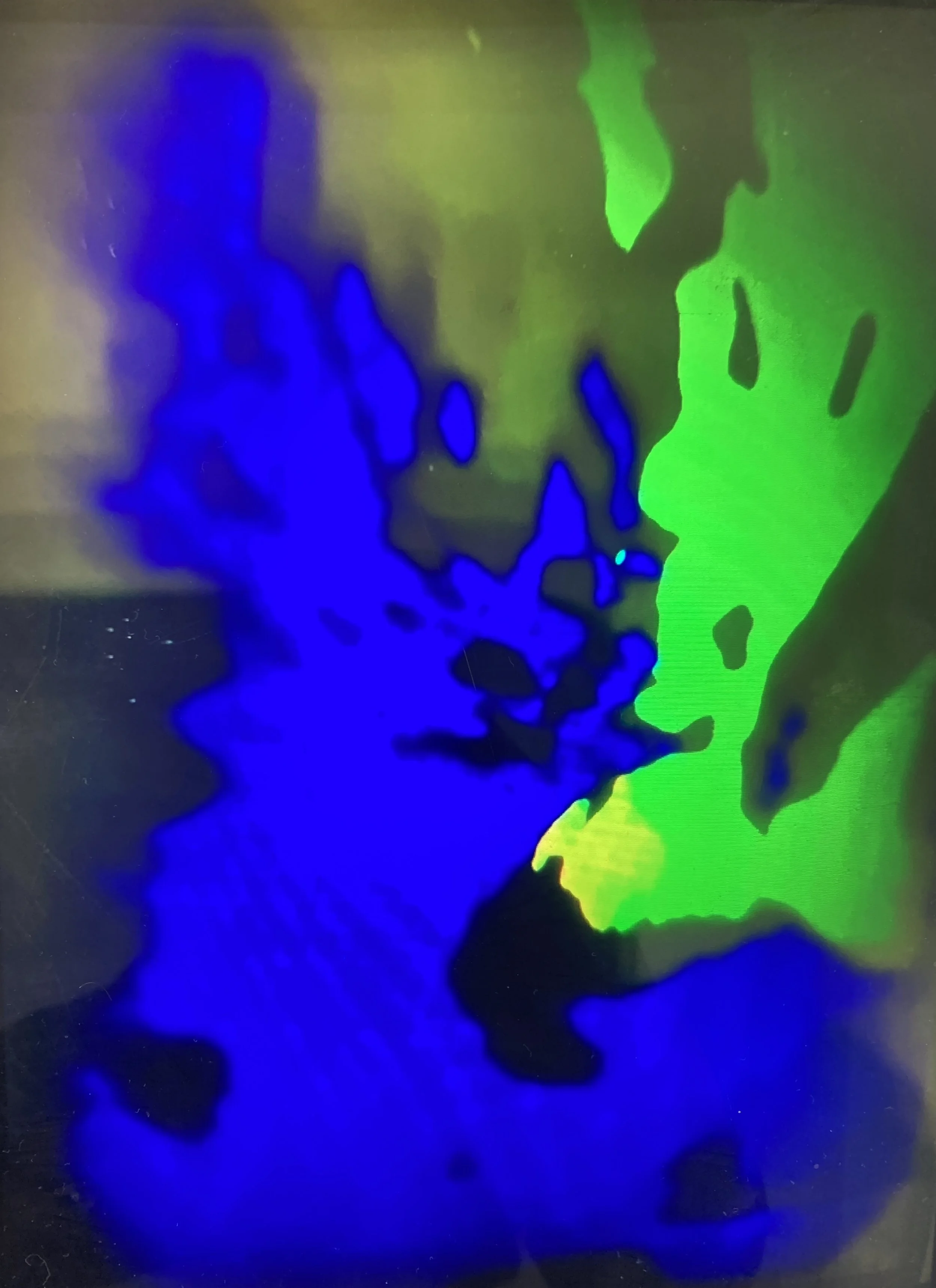Digital Truth
By Valentin Vollmer
What do we see when we look at an image?
What do we believe when we see it a hundred times? In times of artificial intelligence and infinite scroll, we are confronted not only with new ways of seeing—but with new ways of believing. Our sense of truth no longer arises from direct experience, but from repeated exposure, filtered feeds, and algorithmic amplification.
We no longer choose what to see; it is chosen for us. Subtly, relentlessly.
Digital Truth begins with a simple act: photographing a digital image. Then photographing that photo again—displayed on another screen. Again and again. A feedback loop of visual reproduction. Nothing is altered manually. No filters, no editing. Just camera and screen, screen and camera. And yet: the image shifts. It breaks down. It mutates.
It becomes something else. Something new.
What starts as a documentary gesture ends as a kind of digital erosion. The original motif disappears, replaced by colored haze, glitches, fractured forms. It is a transformation that no longer tells a story—it questions whether stories can survive such distortion at all.
At the same time, this visual metaphor points beyond the image. It gestures toward a much larger transformation: that of communication itself. In the analog world, truth was fragile but tangible. In the digital world, truth is still fragile—but it spreads faster, fragments quicker, and disguises itself more elegantly.
We live in filter bubbles. We scroll in echo chambers. Social media platforms reward outrage and confirmation. Their algorithms know our habits better than we do—and feed them back to us with surgical precision. We are no longer participants in a shared public discourse, but segmented audiences curated by invisible code. We are their subjects.
And this matters. Because democracies depend on shared realities. Because a society without dialogue becomes a society of monologues. Because without a shared understanding of reality, there can be no shared responsibility for shaping it.
Digital Truth is not a solution. It is a quiet interruption. A visual hypothesis. A question posed in silence: What happens to meaning when repetition replaces reflection?
This project reminds us that even a photograph — supposedly a moment captured—can become a process of disappearance. It is not only the image that fades. It is the possibility of understanding. The connection between sender and receiver. Between self and other.
And yet, there is beauty in this fading. There is stillness in the distortion. There is, perhaps, a final truth: that what we lose might tell us more than what we keep.
Digital Truth does not speak in warnings, but it listens with care.
To systems. To symbols. To silence.
And it reminds us—gently, persistently—that what we see is never all there is.
That we remain human not by mastering the algorithm, but by noticing where it ends.















